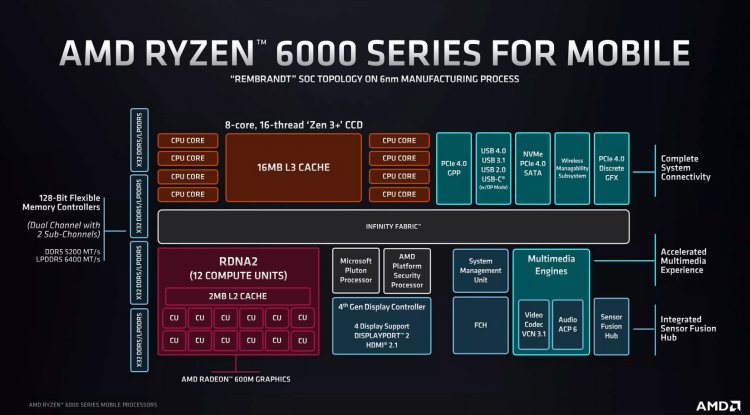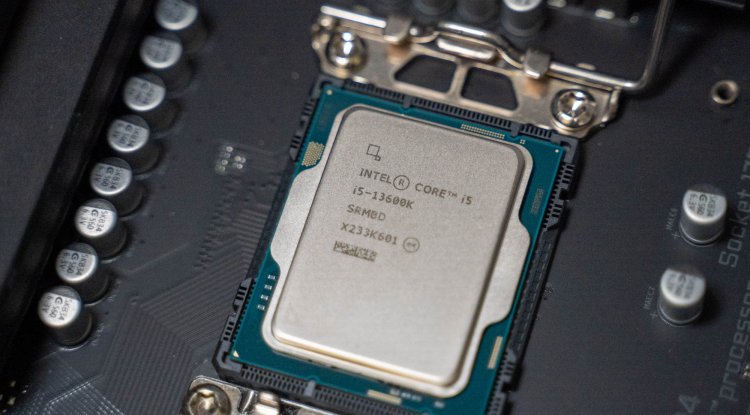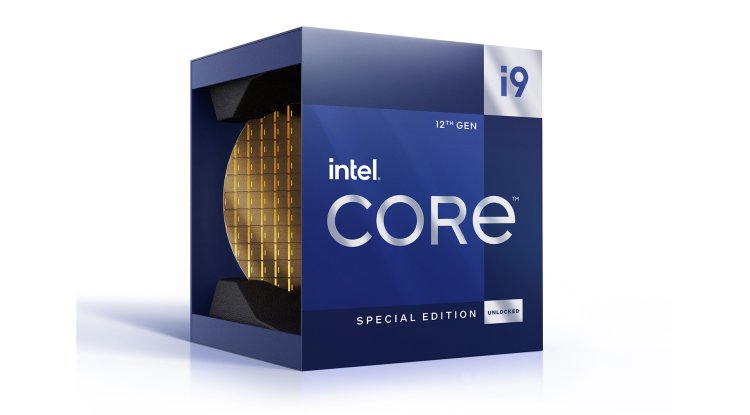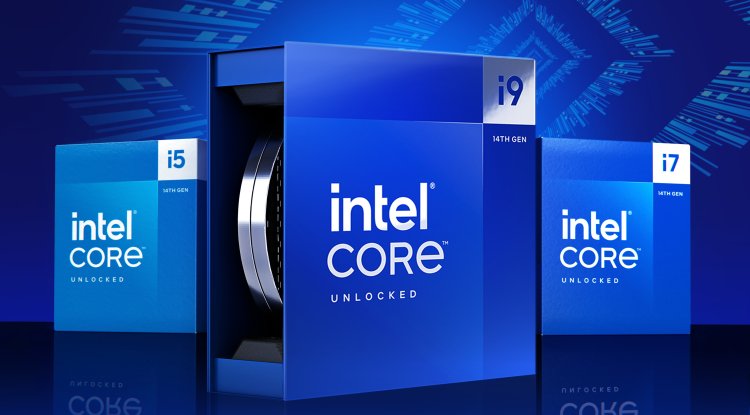AMD Ryzen 6000 Mobile “Rembrandt”
AMD Radeon 600M series, “Navi” architectural improvements that we have seen since 2019 on the desktop, are now built into mobile chips.

Notebooks with the new Zen 3+ “Rembrandt” AMD Ryzen 6000 Mobile series processors were announced today, marking the introduction of RDNA2 and GPU, TSMC’s 6nm process and DDR5 memory into the world of AMD-based laptops.
There are a few key features to highlight with the Ryzen 6000 Series mobile processors, and then some details on optimizing micro-architectural power. First are the basic specifications of the processors themselves. AMD once again divides the mobile line into U-series (15-28V TDP), HS-series (35V TDP) and H-series (45V + TDP).
The flagship chip for each series has eight Zen 3+ cores and 16 threads, but differs in TDP-induced clock speeds and iGPU performance. There are also six-core, 12-thread Ryzen 5 options for U-, HS- and H-series applications. Performance
Performance for the Ryzen 6000 should be improved over the Ryzen 5000 through more transistors, despite its (disproportionately) larger matrix area. The Ryzen 6000 Mobile Series has 13.1 billion transistors at 210 mm2, while the Ryzen 5000 Mobile Series has 10.7 billion transistors at 180 mm2.
For parts of the H and HS series that use a TDP of 35w +, the base clocks are 3.2GHz or 3.3GHz, with gain frequencies up to 5.0GHz. Understandably, the U-series reduces this a bit with base clocks coming below 3GHz and boosting around mid-4GHz levels.
Inside the 8-core Zen 3+ CCD, you still get the same 16 MB L3 cache we saw with the Zen 3, which matches the 0.5 MB of L2 cache per core we’re used to. There are differences in how AMD uses cache memory for Zen 3+, but in terms of quantity, it is largely the same as raw Zen 3.
Where there has been a significant change is in the integrated graphics department. Finally, AMD upgraded the chip core to RDNA2 in its form of 12 computer units for the Radeon 680M (6 CUs for the Radeon 660M within the Ryzen 5).
AMD Radeon 600M series, “Navi” architectural improvements that we have seen since 2019 on the desktop, are now built into mobile chips. This represents a huge upgrade over the old Vega-based CUs on AMD’s previous generations of mobile processors. The doubled capacity of the L2 cache, higher frequencies and a larger rendering background are just some of the significant improvements from RDNA2.
Speaking of higher frequencies, Ryzen 9 chips now see maximum GPU frequencies up to 2.4 GHz, which translates to 3.4 Teraflops FP32 performance. AMD is actually comparing gaming performance to the GTX 1650 Max-Q in its presentation slides. But this will obviously require additional independent testing.
And powering higher-performance graphics cores with higher memory bandwidth is possible thanks to support for DDR5 and LPDDR5. This is AMD’s first consumer platform to support the latest memory technology, and the bandwidth brought by higher DRAM speeds has been highlighted as critical for integrated graphics performance.
128-bit flexible memory chip controllers allow support for DDR5-5200 MT / s and LPDDR5 6400 MT / s. This is good to see, especially with the memory bandwidth that allows support on the chip for 5200MHz + frequencies. Another key improvement
This time on the SoC side, it is through improved connectivity support. And the star of connectivity is - USB4.
Now, AMD is clearly pointing out that this is still in the certification phase for many systems, and we will start seeing the first certified systems in March, and some current hardware comes with USB4-enabled components that can be activated via updates.
What matters is that USB4 supports interoperability with Thunderbolt. But this is at the discretion of the manufacturer, so not all laptops will technically support TB hardware. However, in isolation, USB4 can offer many of the same features as Thunderbolt; up to 40Gbps transfer rate, DisplayPort, PCIe tunneling and power delivery if used as USB-PD. But, once again, these features will vary depending on the individual laptop.
AMD has finally added support for PCIe Gen 4 across its platform. You get eight GPU strips and then twelve additional connectivity strips for multiple high-bandwidth devices or NVMe SSDs.
This was an absolute necessity for the Ryzen 6000 Mobile, as Intel has been offering PCIe Gen 4 on its laptop chips for a long time. And now that the Gen 4 NVMe repository and dGPU are common, it really was a critical upgrade.





































